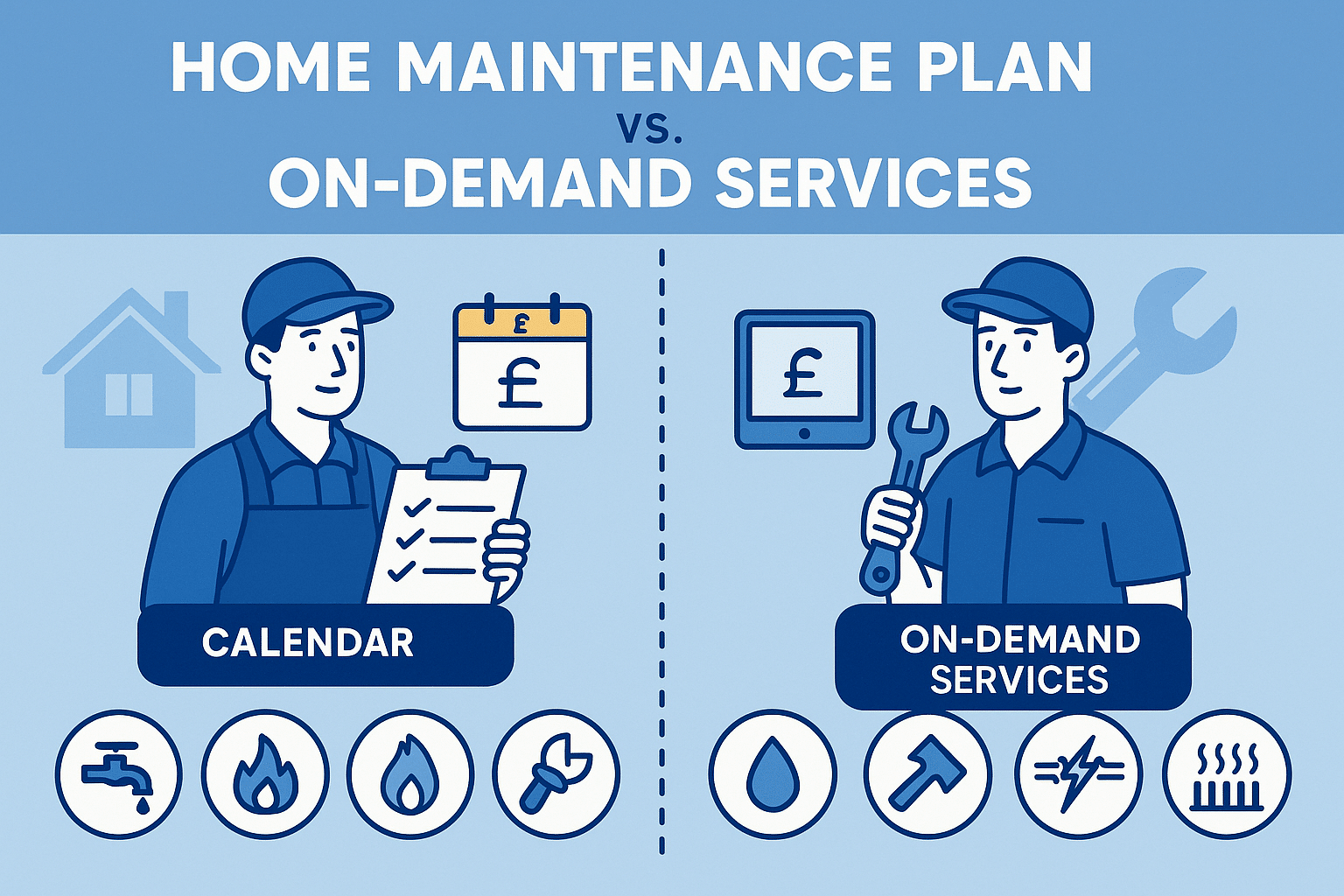 12 Genius Ways to Slash Your Energy Bills: UK Winter 2025 Edition
12 Genius Ways to Slash Your Energy Bills: UK Winter 2025 Edition
After record-high UK energy bills in recent years, making your home more efficient isn’t just good for the planet—it’s essential for your wallet. Thanks to the £6.6 billion Warm Homes Investment and advancements in energy technology, 2025 is shaping up to be a critical year for reducing household costs and carbon footprints alike.
Whether you’re a homeowner, landlord, or part of a facility management team, this guide will equip you with practical strategies to cut down your winter energy costs. From smart home upgrades to low-cost behavioral adjustments, we’ll explore actionable steps tailored for UK residents.
I. The Smart Thermostat Revolution
Smart thermostats have become a must-have for energy-conscious households. They use AI to understand your heating habits, optimize schedules, and ensure no energy is wasted when you’re not at home.
🔹 Actionable Tips:
- Install a smart thermostat (e.g., Nest, Hive): Setting one up could reduce your bills by up to 15%.
- Set your temperature 1 degree lower: This small change could save the average UK household £113 over the winter.
- Use geofencing: Automatically adjust heating when you leave or return home using location data.
Savings Potential: £100–£300 annually
II. Combi Boiler Optimization Strategies
Your boiler uses a significant amount of energy during winter. Optimizing how it operates can deliver substantial savings without sacrificing comfort.
🔹 Actionable Tips:
- Reduce flow temperature to 50-55°C: This alone can save £708 annually.
- Schedule annual services: Keep it running efficiently and safely.
- Use thermostatic radiator valves (TRVs): Adjust individual radiator temperatures based on room usage.
Savings Potential: £200–£700 annually
III. Insulation Innovations
A well-insulated home retains more heat, reducing how often you need to turn up the heating. Fortunately, many insulation upgrades qualify for government grants under the Warm Homes Plan.
🔹 Actionable Tips:
- Install or check loft insulation (270mm recommended): Prevent heat loss through your roof.
- Seal draughts with weatherstripping or draught-proofing kits.
- Apply for government grants like the “Labour Government Energy Grants.”
Savings Potential: £150–£600 annually
IV. Technology-Driven Energy Monitoring
Smart energy monitors help you understand real-time usage patterns, enabling you to pinpoint high-consumption appliances and adjust behaviors accordingly.
🔹 Actionable Tips:
- Install a smart energy monitor.
- Track daily/weekly trends using apps.
- Set alerts to maintain energy budget goals.
Savings Potential: £75–£220 annually
V. Renewable Home Integration
Switching to renewable energy doesn’t just reduce your carbon footprint. With government incentives, the cost of adoption is lower than you might think.
🔹 Actionable Tips:
- Explore solar panels with pay-as-you-go options or grants.
- Research heat pumps: These are up to four times more efficient than traditional gas boilers.
- Join community energy schemes to share resources and costs.
Savings Potential: £500+ annually over time
VI. Appliance Efficiency Hacks
Small changes to how you use appliances can yield noticeable savings. Modern household gadgets are now smarter and more efficient than ever.
🔹 Actionable Tips:
- Replace old appliances with A+++-rated energy-saving models.
- Use smart plugs to reduce “vampire power” from standby appliances.
- Run washing machines and dishwashers only when full, using eco-modes.
Savings Potential: £50–£350 annually
VII. Heating Behavior Optimization
The way you heat your home matters. Smart scheduling and zonal heating ensure you’re only using energy where and when it’s needed.
🔹 Actionable Tips:
- Close unused room doors and heat only commonly used spaces.
- Use programmable thermostats for zonal heating schedules.
- Layer up—combine comfort with cost-efficiency using thermal clothing indoors.
Savings Potential: £100–£250 annually
VIII. Window and Draught Management
Windows and doors are some of the biggest culprits of heat loss. Upgrading them or sealing gaps can drastically improve your home’s efficiency.
🔹 Actionable Tips:
- Install secondary glazing if full double/triple glazing isn’t affordable.
- Use window films for additional insulation.
- Combine with thermal curtains for added heat retention.
Savings Potential: £100–£500 annually
IX. Water Heating Efficiency
Hot water usage represents a significant portion of your energy bill. Efficiency here is a win-win for your finances and the environment.
🔹 Actionable Tips:
- Wash clothes at 30°C to reduce heating demand.
- Use low-flow showerheads. Switching to one can save an estimated £708 annually.
- Insulate your hot water cylinder—and don’t forget to fix those leaky taps!
Savings Potential: £150–£700 annually
X. Smart Lighting Solutions
Lighting accounts for a smaller portion of energy use, but upgrading to LEDs and adding automation can still deliver meaningful savings.
🔹 Actionable Tips:
- Replace all bulbs with energy-efficient LEDs.
- Use motion sensors for high-traffic areas like corridors.
- Leverage dimmer switches or natural light during the day.
Savings Potential: £50–£150 annually
XI. Government and Utility Support
The Warm Homes Plan and other government initiatives are making sustainable upgrades more accessible, but applications are often time-sensitive.
🔹 Actionable Tips:
- Apply for the Warm Home Discount (typically £150 off your winter bill).
- Research the Energy Company Obligation (ECO) scheme for eligible upgrades.
- Attend council-led workshops for more grant opportunities.
Savings Potential: £300+ annually
XII. Behavioral and Lifestyle Adjustments
Finally, small changes in energy habits can add up, creating both immediate and long-term savings.
🔹 Actionable Tips:
- Turn off appliances and lights when not in use.
- Batch cook and use energy-efficient cookware like pressure cookers or slow cookers.
- Reduce screen brightness on TVs and laptops to save between £20-£40 a year.
Savings Potential: £100–£200 annually
Moving Toward Energy Freedom
By implementing some (or all) of the above tactics, UK households stand to save between £1,000–£2,330 annually—all while reducing environmental impact. The future of energy in the UK is about balance, efficiency, and smarter decisions. Take the first step today by exploring the technologies, grants, and behaviors that resonate most with your lifestyle.
For more inspiration, tune in to our Winter Energy Savings Podcast and explore expert interviews, actionable tips, and community challenges designed to help you maximize your savings.


